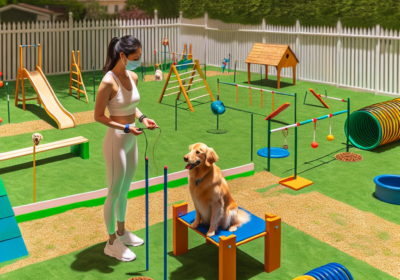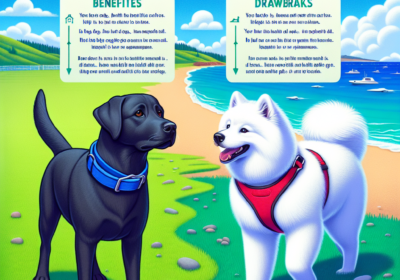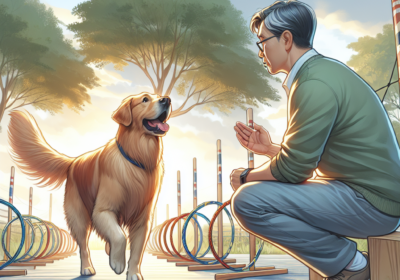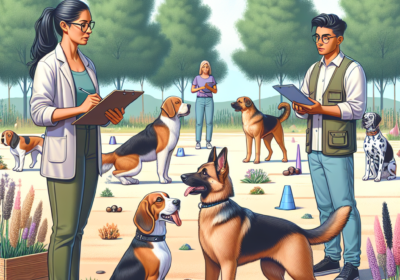How Do I Prevent and Address Behavior Problems in Dogs?
The first step in preventing and addressing behavior problems is to identify the problem. This is best done by talking to a professional dog trainer or veterinarian.
Often there is a medical cause for the problem, such as gastrointestinal disease or an endocrine disorder. In these cases, a full physical exam and other diagnostics are required to determine the exact nature of the issue.
Aggression
Aggression in dogs can be a major problem, but it’s usually treatable. It can be a matter of understanding your dog’s underlying needs and addressing them in a way that’s safe for you and your family.
The first step is determining who your dog is aggressive toward. This is important because it can help you understand what’s causing the problem, and it can also provide insight into your dog’s motivation for aggression.
For example, if your dog only barks at veterinarians or groomers, it may be a case of territorial aggression, which is caused by the fact that dogs were partly bred to protect their home. In this case, it’s important to identify the situation that is triggering the behavior and work to change the situation so that your dog does not feel the need to defend her space.
Another common type of aggression is fear aggression, which is caused by the dog’s perception that a certain situation is frightening. This type of aggression does not usually show any warning signs, like growling or snarling, and your dog will respond to the fearful situation only when they feel that they have no other option but to fight back.
A common strategy for managing this type of aggression is desensitization to the trigger, which involves retraining your dog to recognize the object or person that’s causing her to fear it. This can be done through positive reinforcement, such as rewards when she calmly approaches the object or person without any behavior problems.
The best time to prevent and address aggression is when your dog is young. The sooner you can find out if your dog is developing a problem and start working to correct it, the sooner you’ll be able to stop the aggression before it starts to interfere with your quality of life.
Biting
Biting is an aggressive behavior that can lead to serious injury or death. According to the Centers for Disease Control (CDC), there are 4.5 million people bitten by dogs in the United States each year.
Dogs bite for many different reasons, but the most common reason is fear or anxiety. This can be a reaction to a stressful event or situation, such as pain, illness, or an unexpected touch.
The most important thing you can do to prevent a dog from biting is to understand their body language. Most dogs show specific warning signs before they bite, including growling, snapping, raised fur, a rigid posture and rapid tail wagging.
Educate yourself about the dog’s body language, as well as its socialization history, so that you can understand when your pet is feeling anxious or afraid and act accordingly. You can also consult with a veterinarian or a qualified behavior and training professional for help with your dog’s fear, aggression or other problem behaviors.
Another way to avoid a dog biting is to train them early to respect you and other people in your home and community. This starts with basic obedience training, so they know when you want them to come, sit, stay and so on.
You can also help a dog who has a history of biting to learn to stop by desensitizing them. This is a process that should be done in a step-wise manner and with a child’s safety always protected.
A good dog training professional can help you develop and implement a safe interaction strategy for both your children and your pet, avoiding bite incidents altogether. You can even train your child to handle their own dog with care and respect, allowing them to assume a leadership role in your home.
Intimidation
When dogs feel threatened, they may become aggressive. This is a common problem, and it can be treated successfully. The first step is to prevent the dog from feeling threatened in the first place.
Puppies are especially vulnerable to intimidation because they are so young and developing their sense of the world. They are learning to understand their environment and are often exposed to a lot of things they aren’t ready for, such as loud noises or strange people.
It’s important for puppies to socialize with other dogs and learn how to play. This helps them avoid a variety of behavior problems later in life.
Bullying, on the other hand, isn’t a natural behavior for a dog to display and can lead to a lot of stress for both parties. It’s crucial to monitor interactions between your dog and other dogs so you can spot a bully before they get out of hand.
To prevent your dog from bullying other dogs, start by playing with him and praising him for appropriate interactions. It’s also a good idea to give him well-timed behavioral breaks, so he has time to cool off before getting into a confrontation with another dog.
Some dogs, especially herding breeds, show a variation on territorial aggression. They may back up and bark if they feel like someone is trying to invade their territory, even though they have no real reason to do so.
Territorial aggression can be managed by preventing the dog from feeling like he owns any part of the yard or home. This can be done by enforcing rules on access to the property, such as blocking access to the lawn with a fence or keeping your dog off of furniture or other belongings.







![The Dog Podcast Uncovers Startling Truths About What We Feed Our Dogs [Press Release]](https://yourhomeandgardenhub.com.au/wp-content/uploads/2024/08/dog-bowl-400x280.webp)


